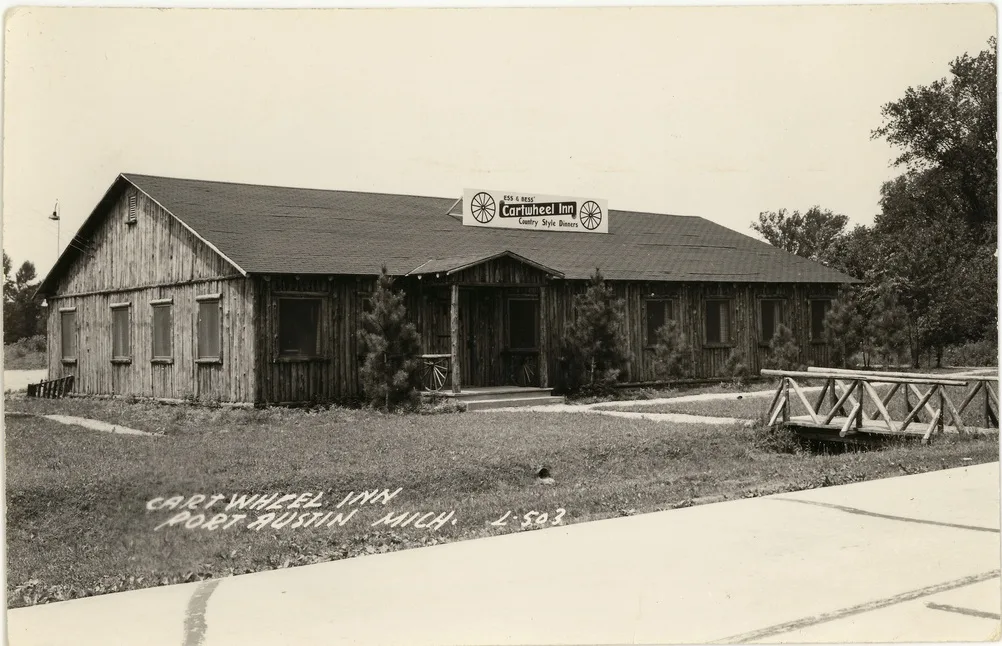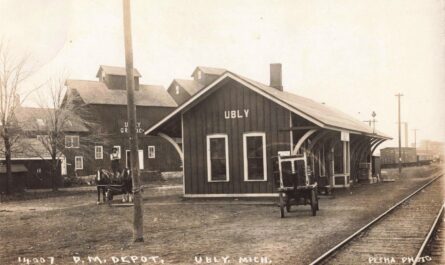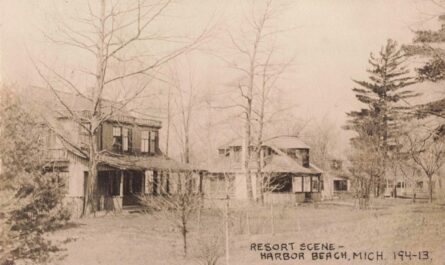In the autumn of 1926, the small town of Tecumseh became the unlikely stage for one of Henry Ford’s boldest experiments beyond the automobile. The photograph captures the Henry Ford Gas Electric Train Car No. 35 of the Detroit, Toledo & Ironton Railroad (D.T.&I.) on its inaugural “regular” run, displacing the steam locomotive that had been king of the rails. Labeled with care in the image, the event is dated “Monday, Oct. 25, 1926.”
Ford and the Railroad: A Vertical Ambition
Ford had purchased the D.T.&I. in 1920, paying about $5 million for a railroad often derided as “the railroad to nowhere.” His aim? To control the flow of raw materials—especially coal from southern Ohio—and finished auto parts to his River Rouge complex in Dearborn. What he inherited was a weary, undercapitalized line whose track, bridges, and rolling stock needed serious overhaul.
But Ford was not content merely to own a railroad. He envisioned innovation: the electrification of D.T.&I. (at least on a portion of its route) and the use of self-propelled railcars to replace steam on passenger runs.
Car No. 35: A Modern Replacement
The gas-electric Car No. 35 (and its sister, No. 36) was built in cooperation with Ford engineers and Pullman, using aluminum in its structure to save weight. On October 25, 1926, it replaced steam power on passenger trains between Delray and Bainbridge (about a 28-mile stretch), cutting schedule time from 11 hours to 9½ hours. It operated with a three-man crew. Later, when the experiment had passed its usefulness, its engine was removed and the car was repurposed as a combine (a mixed passenger/freight car) behind a steam locomotive.
Visually, Car No. 35 would have presented a sleeker silhouette compared to the bulky steam engine it displaced. In the photo we see public interest already: officials and observers standing by the rail, the car’s lettering “Detroit Toledo & Ironton” clearly visible along its side.
Ambition, Experimentation, and Retreat

Ford’s electrification plan was ambitious: catenary arches were built along approximately 17 miles of the line between Rouge and Flat Rock, and two electrified locomotives were constructed for limited service. The concrete arches, spaced approximately 300 feet apart, required a massive amount of concrete and rebar—each support used 95 cubic feet of concrete and 257 feet of rebar. The power was first drawn from Ford’s Highland Park plant, and later from the Rouge complex itself.
But the railroad bureaucracy and regulation proved a heavy burden for Ford. The Interstate Commerce Commission, labor rules, and rate controls constrained his ambitions. By 1929, he sold D.T.&I. to Pennroad Corporation (a holding of the Pennsylvania Railroad) for about $36 million, realizing a tidy profit over his original investment. The overhead electric lines were decommissioned in March 1930; the locomotives were scrapped.
Some of the concrete arch supports survived: removing them was laborious and expensive, so many remained standing for decades—and some still do. Though the experiment ended, they stand as silent monuments to Ford’s daring ambitions beyond the automobile.
Why This Henry Ford Gas Electric Train Photograph Matters
- It captures a moment of transition: a modern gas-electric railcar replacing an older steam engine.
- It hints at a larger, ambitious plan linking Ford’s factories and mines via self-propelled rail technology.
- It offers a window into the industrial mindset of the 1920s: experimentation, vertical integration, and controlling supply chains.
- And it reminds us that even titans like Ford could hit friction when confronting regulation, entrenched systems, and the inertia of older technology.
In this single image, we see more than a train: we see a founder’s restless desire to remake transportation from the ground up.
Works Cited
“Henry Ford’s Railroad: The Detroit, Toledo & Ironton.” Mac’s Motor City Garage, 23 May 2013, .
“Henry Ford’s Electric Railroad.” Detroit1701.org, Detroit Historical Society.
“Henry Ford’s D.T.&I. Railroad—Digital Collections.” The Henry Ford, The Henry Ford Museum of American Innovation.
“The Railroad That Went No Place But Eventually Made It, Part 1.” Michigan Railroads.com Stories, Michigan Railroads,.
“The Railroad That Went No Place But Eventually Made It, Part 2.” Michigan Railroads.com Stories, Michigan Railroads, .
Genitti, Tom. “Henry Ford’s Electric Railroad—D.T.&I.” Fornology, 9 July 2014, .




